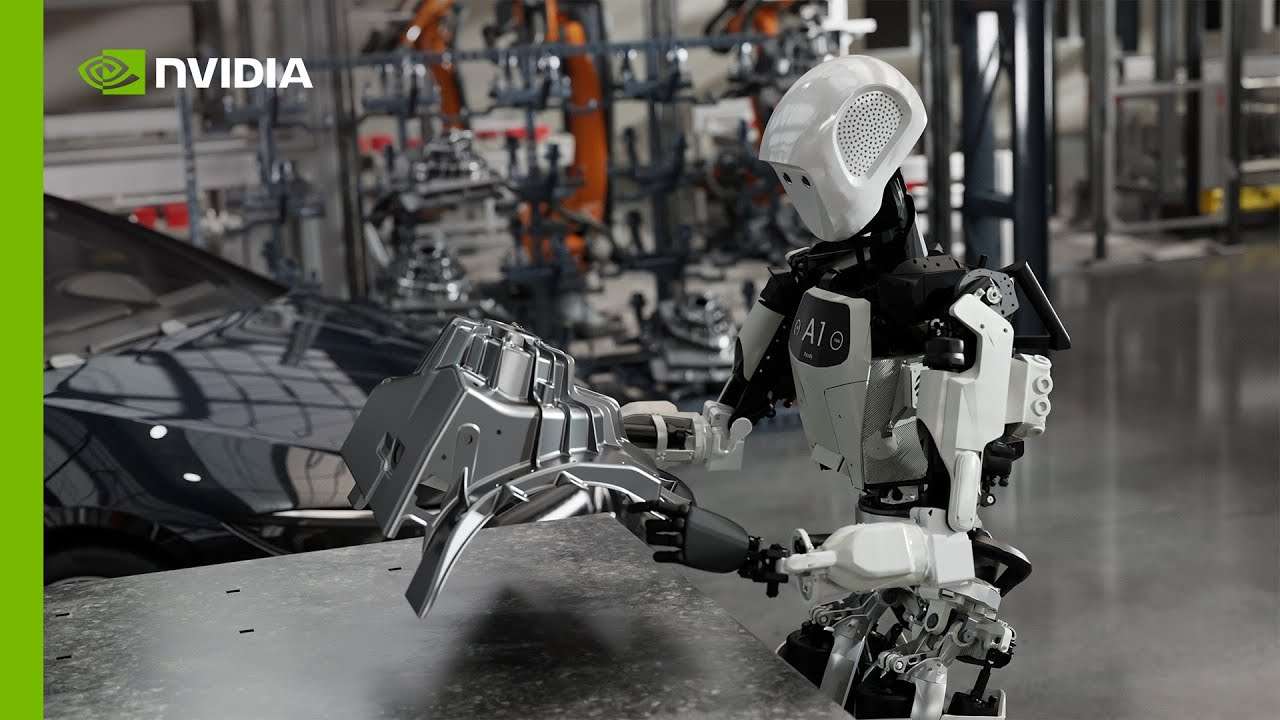The emergence of humanoid robots is no longer a distant future scenario but a practical matter of interest to any company that manufactures, stores, or provides physical services. The key question is simple and direct: How much does a humanoid’s work hour cost? The futurist and consultant Dr. Pero Micic has published a cost breakdown — with deliberately conservative assumptions — setting a reasonable cap at $14/hour during the initial deployment phase. With economies of scale and learning effects, he argues that the price will drop below $10/hour and could even fall below $5/hour in the medium term.
This analysis, aimed at non-technical decision-makers and general tech media, is based on a premise: humanoids are not “rockets to the Moon,” but assemblies of mature technologies (actuators, gearboxes, electronics, sensors, small kWh batteries, and plastics). Today, capex is concentrated primarily on motors and gears, while the rest of the components scale well as production increases.
Conservative assumptions supporting the calculation
Micic structures his breakdown into three sections: cost per unit of production, annual operational costs, and cost per hour. Key points include:
- Lifespan: 8 years (including repairs).
- Utilization: 6,600 hours/year (330 days × 20 hours/day). This equals the annual time for more than three people.
- Performance: 100% of human speed in first-generation models (with potential for 200%+ in future versions).
- Business model: Robot-as-a-Service (RaaS) with hour/month/year service fee; in some cases, a down payment similar to manufacturing costs.
- Cost structure:
- Production (three scenarios): $11,000, $22,000, or $33,000 per unit (hardware + software + delivery).
- Annual operation: from $23,890 to $30,390, with $18,000 allocated to human supervision/coordination — a figure the author considers “probably very high” as autonomy and orchestration improve.
- Energy: uses 2 kWh in operation as a conservative hypothesis, with ≈ $2,640 yearly expenditure.
- Maintenance and repairs (≈ depreciation): between $1,375 and $4,125/year depending on capex.
- Capital (linear depreciation): between $1,375 and $4,125/year, aligned with three investment levels.
Using these assumptions, the total cost per hour — adding the provider’s service fee — falls within a range of $10.86–$13.81/hour, which Micic rounds to ≤ $14/hour as an initial reasonable ceiling.
The painful comparison: $14/hour versus $42.53/hour from a skilled worker
To evaluate the impact, the report compares the robot against a skilled worker with a total cost (salary $60,000/year, social security 20%, and related costs) amounting to $42.53/hour over 1,975 hours/year. Even considering the most expensive humanoid scenario ($13.81/hour), the advantage is approximately $28.72/hour. Operating for 6,600 hours, the annual savings per robot ranges between $189,539 and $209,039, depending on capex levels.
The message to tech and operational companies is clear: even with conservative assumptions, the business case adds up.
Cost and savings table (according to the author’s attached sheet)
Currency: USD. European format with decimal comma and thousands point.
The three scenarios reflect different production costs (CAPEX). Usage is estimated at 6,600 hours/year.
| Concept | Scenario A CAPEX $11,000 | Scenario B CAPEX $22,000 | Scenario C CAPEX $33,000 |
|---|---|---|---|
| Total production cost per unit | 11,000 | 22,000 | 33,000 |
| Total annual operation cost | 23,890 | 27,140 | 30,390 |
| Operation cost (OPEX only) per hour | 3.62 | 4.11 | 4.60 |
| Provider service fee (RaaS) per hour | 7.24 | 8.22 | 9.21 |
| Total cost per hour (robot) | 10.86 | 12.34 | 13.81 |
| Hourly cost of a skilled worker | 42.53 | 42.53 | 42.53 |
| Savings per hour | 31.67 | 30.20 | 28.72 |
| Annual savings (6,600 hours) | $209,039 | $199,289 | $189,539 |
| Additional savings/benefit (%) | 74 | 71 | 68 |
Quick summary of the table:
- In the most expensive scenario (capex of $33,000), the robot costs $13.81/hour; the savings over a $42.53/hour skilled worker are approx. $28.72/hour, or $189,539/year.
- With intermediate capex ($22,000), hourly cost drops to $12.34/hour and annual savings increase to $199,289.
- In lower capex ($11,000), hourly cost is $10.86/hour, and annual savings reach $209,039.
Why a humanoid can be profitable without “retooling the factory”
The main advantage of the humanoid format lies not in lifting 200 kg but in fitting into human spaces: doors, hallways, elevators, stairs, tools, PPE, furniture… This reduces engineering complexity and speeds up deployment. Accordingly, the best initial use cases with the highest ROI tend to be:
- Internal logistics: line replenishment, parts supply, moving boxes and light containers.
- End-of-line tasks: packing, labeling, lightweight palletizing, visual inspection.
- Facility inspections: rounds, indicator reading, basic actuation (buttons, valves).
- General services: light cleaning, repetitive tasks in retail/hospitality.
With RaaS, companies pay for usage, outsource maintenance and upgrades, and convert capital expenditure into predictable operational expenses. For providers, recurring contracts facilitate telemetry and continuous improvement of the product.
Potential issues (and why the calculations remain valid)
No pilot is perfect: there will be downtime, unprepared environments, human interactions, and stops. Cybersecurity, liability, and compliance are also factors. Still, the flexibility of the model is high: even if initial robot productivity is only 60–70%, the cost difference remains favorable with prices between $10–$14/hour.
Additionally, the breakdown accounts for $18,000/year in human supervision, an amount the author considers to be overestimated for the future. As tools for orchestration and multi-robot coordination improve, this expense will decrease, reducing the cost per hour automatically.
Practical steps recommended for the short term
- Inventory repetitive, physically demanding tasks with limited variability.
- Time cycle analysis: identify exceptions and estimate productivity equivalence versus a human.
- Launch RaaS pilots with clear SLA (availability, safety, cycle times) and KPI (€/batch, €/hour, defects).
- Prepare infrastructure: loading zones, secure network, signage, layouts, and safety procedures.
- Train staff in supervision and maintenance, planning upskilling and internal communication.
If the cost curve in the table confirms, transitioning from “filling vacancies” to redesigning entire processes will be a matter of iterations, not decades.

Frequently Asked Questions
Where do the $10.86–$13.81/hour figures come from?
From the author’s breakdown across three capex scenarios ($11,000 / $22,000 / $33,000), plus annual operation costs ($23,890–$30,390), energy, maintenance, and a typical RaaS service fee. With 6,600 hours/year, the/hour result ranges between $10.86 and $13.81. Micic rounds this to $14/hour as a cautious initial ceiling.
Why choose RaaS instead of buying the robot?
Because it reduces technological risk, includes upgrades and maintenance, converts CAPEX to OPEX, and aligns costs with usage. For manufacturers, it improves recurring revenue and supports a continuous improvement cycle driven by field data.
What annual savings can be expected in real cases?
With a skilled worker costing $42.53/hour and a humanoid ranging from $10.86 to $13.81/hour, the annual savings at 6,600 hours/year are between $189,539 and $209,039 per unit. The exact savings depend on the productivity level achieved in each specific task.
What practical limits should we consider before a pilot?
Consider safety (machines, people), cybersecurity, layout, process exceptions, staff training, and rigorous time measurement. The environment setup significantly affects ROI, just as much as the price per hour.
Note: All data and assumptions are based on public analysis by Dr. Pero Micic and the attached table accompanying his publication. The specifics of each use case may influence productivity and, consequently, the actual effective hourly cost.

